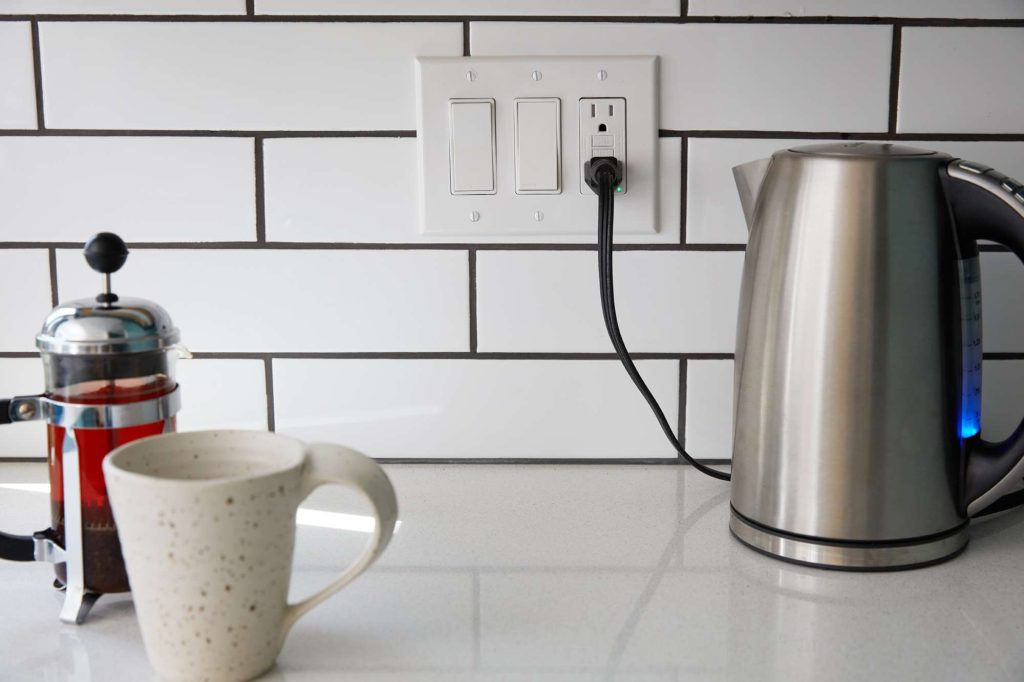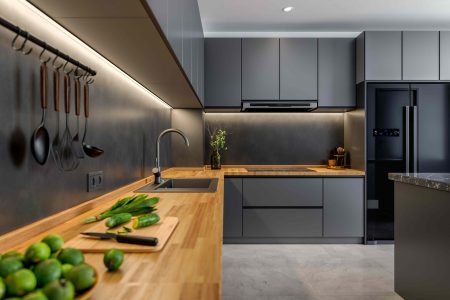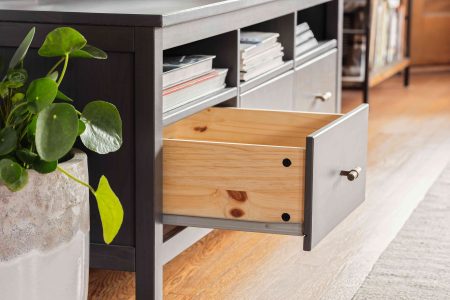While it may be difficult to see in the short term, satisfying residential electrical code requirements isn’t about making the inspector happy or getting an “Approved” stamp on your permit. Electrical code is a flexible set of practices that’s responsive to the continually changing home, all with an eye toward safety.
Wiring kitchen outlets that follow electrical code certainly helps a do-it-yourselfer create a safer space. But in many ways, it also helps to build a better-functioning kitchen.
Electrical code basics often seem like pointless rules cooked up in an office boardroom. However, electricians, contractors, and other industry professionals who work in the field actually hammer out electrical codes over detailed discussions and many revisions. No change comes without much consideration.
For the homeowner, the electrical code is less restrictive than it is illuminating and constructive. For example, most small appliances like mixers have short cords. Code requirements for GFCI outlets in the kitchen state that outlets must be located no more than 4 feet apart from each other.
GFCI-Protected Small Appliance Circuits
Requirement: Provide at least two 20-amp, 120-volt circuits to supply power to GFCI (Ground Fault Circuit Interrupter) electric receptacles for countertop and eating areas.
Why: In the kitchen, 20 amp outlets are required (vs. 15 amp) for higher power requirements due to appliances like toaster ovens, blenders, coffee makers, and mixers.
The reason why two circuits are required is that this spreads out the coverage area. This way, the total load is not entirely served by the same circuit.
Providing frequent plug-in points has long been a mainstay of the NEC so that homeowners are not tempted to stretch power cords too far. But with time, small appliance cords have gradually become shorter. Newer countertop appliance cords are usually only 2 feet long now, and electrical outlets in the kitchen are not to be greater than 4 feet apart. For this reason, the kitchen outlet height should also not exceed 20 inches from the surface of the counter.
Basic Lighting Circuit
Requirement: Provide at least one 15-amp, 120-volt circuit feeding a ceiling fixture, recessed lights, and any under-cabinet lights. This cannot be on a GFCI circuit.
Why: Less amperage is required for light fixtures. However, if you desire more lighting, you will have to bring up the amperage and other attendant factors (such as wire gauges, etc.) to meet those needs.
The electrical code requires at least one lighting circuit to ensure that kitchens have at least some kind of permanent lighting.
The reason the lighting circuit cannot be on GFCI is that it might accidentally be turned off if other services happen to trip off the GFCI.
Distance Between GFCIs Over Countertops
Requirement: You should allow no more than 48 inches between countertop receptacles.
Why: The intent is that a homeowner should not be tempted to stretch a cord more than 24 inches (i.e., half of the required 48 inches) to plug in a small appliance. You can provide GFCIs more frequently than every 48 inches, which is generally seen as the recommended practice.
Tamper-Resistant Outlet Code Requirements
Requirement: All 15 amp and 20 amp outlets, whether GFCI or not, must be tamper-resistant in the following kitchen-related places: small appliance circuit, countertop space (including kitchen island countertop outlets), walls, and hallway space.
Why: If you have not done electrical work for a few years, you may be surprised by this requirement. If you purchased an older house, there is a likely chance that your house has none of these special outlets.
Responding to the danger of children shocking themselves by sticking conductive items (paper clips, bobby pins, etc.) into outlets, the NEC began to require the installation of outlets that have a strong shutter inside.
This shutter can only be opened when two electrical prongs are pushed into an outlet at the same time—and with great force. These outlets are identified by the letters “TR” on the front yoke of the outlet.
Countertop Sections 12 Inches Wide Require GFCI
Requirement: Countertop sections 12 inches wide or more are considered a wall and must have a receptacle (GFCI).
Why: People do all sorts of things on tiny sections of countertops, including trying to cram in small appliances. This requirement ensures that even in small areas, any appliances that are used will have their own power source.
Dishwasher Circuit
Requirement: Provide one 15-amp, 120-volt dedicated circuit wired with 14/2 cable. NEC Code cycle 2017 now requires dishwashers to be installed on a GFCI circuit.
Why: Dedicated is the operative word in the dishwasher electrical code requirement about circuits. This means that the dishwasher gets its own circuit separate from the refrigerator and other appliances so it cannot accidentally trip off (at the circuit level), thus turning off power to other areas of the kitchen.
Finally, 14/2 is the standard cable for a 15-amp circuit. Higher amperage circuits are allowed (if within the appliance’s operating capacity). If so, the cable and the outlet would need to be changed out.
Garbage Disposal Circuit
Requirement: Provide one 15-amp, 120-volt dedicated circuit wired with 14/2 cable.
Why: The reason for this is the same as for the dishwasher circuit. Garbage disposals do not have an extended run, like ranges or microwaves. The initial surge is so high that it can easily trip off the circuit breaker, thus turning off other appliances in the kitchen.
Microwave Circuit
Requirement: Provide one 20-amp, 120-volt dedicated circuit wired with 12/2 cable.
Why: The 20 amp circuit is needed to handle the higher power requirements of microwaves. A 12-gauge cable is standard for any 20-amp circuit.
Electric Range Circuit
Requirement: Provide one 50-amp, 120/240-volt dedicated circuit wired with appropriately sized wire cable. This should not be GFCI.
Why: Electric ranges draw more power in the kitchen than nearly anything else. Everything about this circuit is super-sized and segregated: a large cable, big-amp circuit breaker, and a dedicated circuit (so as not to trip other appliances or lights).
About Kitchen Electrical Code
The U.S. National Fire Protection Association (NFPA) is the group that creates and updates the National Electrical Code (NEC), which then is adopted in whole or part by your municipality.
Read the full article here









